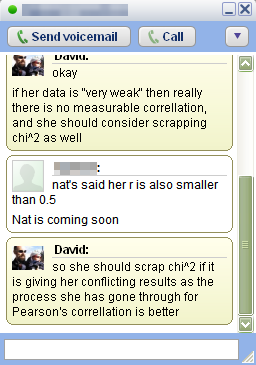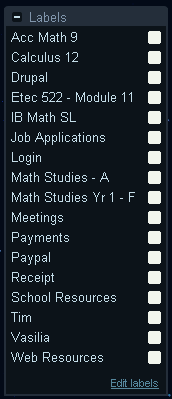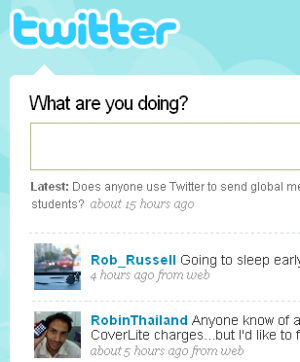I was surfing around when I found a really interesting post by Steve Yegge. He makes the point:
I’m guessing the list was designed to prepare students for science and engineering professions. The math courses they teach in and high school don’t help ready you for a career in programming, and the simple fact is that the number of programming jobs is rapidly outpacing the demand for all other engineering roles. – Steve
He then proceeds to describe some processes for learning mathematics on your own from the perspective of a computer programmer, which are worth reading about since pretty much anyone with an analytical mind and some experience in mathematics could follow a similar approach quite successfully.
This one point I think needs a bit more in depth discussion though. Are we teaching the right types of mathematics in high school? Are there any topics which might better prepare our students for careers outside of school?
First let’s look at career opportunities, focussing on jobs which are growing the fastest. I’ll compile a list here, see my references at the end for sources of this information.
If we look at the list of the 30 professions with the largest employment growth, as an absolute growth rather than a percentage growth we see can pretty much separate them into two basic categories: those which require specialized training in a university, and those which do not.
The professions in the first category, according to this list, are registered nurses, postsecondary teachers, elementary school teachers, computer software engineers, accountants and auditors, management analysts, network systems and data communications analysts. The professions in the second category include things like carpenters, security guards, home health aides, etc…
We can also look at the current job statistics, where we see that professional, service, administrative support positions are by far the most common occupations for people to have today.
So the obvious question becomes, what types of mathematics do you need to be successful at these jobs?
1. Statistics ✔
Everyone needs to know statistics. We use it all over the place because our society has become driven by data. We collect it, we sort it, we analyze and we use statistics to make all sorts of arguments as a result. Not understanding some pretty complex ideas in statistics is a serious hindrance in many areas.
2. Probability ✔
In order to be able to make intelligent decisions, people need to understand that the outcomes of those decisions are all based in probabilities. Decisions about what medication to give, etc.. are based on the probability that a given treatment will be successful so understanding probability helps care-givers make better decisions.
3. Number theory ✔
Having a good grasp of what is going on in the various computer algorithms out there isn’t a bad thing, and courses in number theory could help out a lot of people. It might be hard to justify this mathematics for the typical profession, but for the computer related professions, number theory is almost vital to being able to do their jobs properly. So some more advanced number theory should be part of the higher level mathematics courses at high school and a basic introduction to number theory should continue to be included for everyone.
4. Algebra ✔
We still need to teach algebra and everything related to it. We should also include more linear algebra in school in the more advanced mathematics classes, as a deeper understanding of linear algebra is crucial to many computer related positions. As well, linear algebra is useful for almost all of the engineering fields and sciences, which is why universities typically include an introduction to linear algebra in those programs.
5. Geometry
A little bit of geometry is a good thing so let’s keep a small amount of important geometry. However we are still hammering our kids with geometric proofs from 2 thousand years ago that have almost no relevance in the work-place. Proving something true is good for developing analytical reasoning but let’s do that in number theory instead. Let’s leave the chords and tangents to a circle for a university level course instead.
What’s important in these statistics is that of the technical jobs, we no longer see engineering (except possibly computer engineering) prominently placed, which was one of the professions for which the US originally developed the current mathematics programs. Computer related fields have surpassed the design and engineering fields which suggests that more mathematics which is useful for computer scientists should be taught in school.
Curriculum needs to be chosen that reflects the trends in the workplace, rather than on an ad-hoc basis, or because we have always taught it. If the US, and countries whose education systems emulate the US, are to be more successful in a global market, our high school students need to be better prepared for the real world. Every day we are inundated with statistics and a typical member of society needs to understand these better, in order to make more informed choices. It is our school’s job to supply this curriculum, and it is our job as educators to implement it.
US Department of Labour
 Once you’ve started working with creating and managing online resources for your students, it becomes natural that the ways the students communicate with you is going to change a little bit. Here are some guidelines for ways you can communicate with your students, and some ways to protect yourself while doing so.
Once you’ve started working with creating and managing online resources for your students, it becomes natural that the ways the students communicate with you is going to change a little bit. Here are some guidelines for ways you can communicate with your students, and some ways to protect yourself while doing so. Google mail
Google mail An interesting and relatively new way to communicate with students is through a website called
An interesting and relatively new way to communicate with students is through a website called  There are a lot of good open source programs out there, but not many of them have direct application to a mathematics classroom the way
There are a lot of good open source programs out there, but not many of them have direct application to a mathematics classroom the way  There are 2 cool things I like about Geogebra. The first is that you can export your working file as a dynamic worksheet on a web page, which means you can easily make what you are working on web ready. The second feature which I use all of the time is the ability to export my current file as a picture in PNG (and a few others) format. This allows me to use Geogebra to create graphs for inclusion in my online posts, something my students and I use Geogebra for all the time.
There are 2 cool things I like about Geogebra. The first is that you can export your working file as a dynamic worksheet on a web page, which means you can easily make what you are working on web ready. The second feature which I use all of the time is the ability to export my current file as a picture in PNG (and a few others) format. This allows me to use Geogebra to create graphs for inclusion in my online posts, something my students and I use Geogebra for all the time.